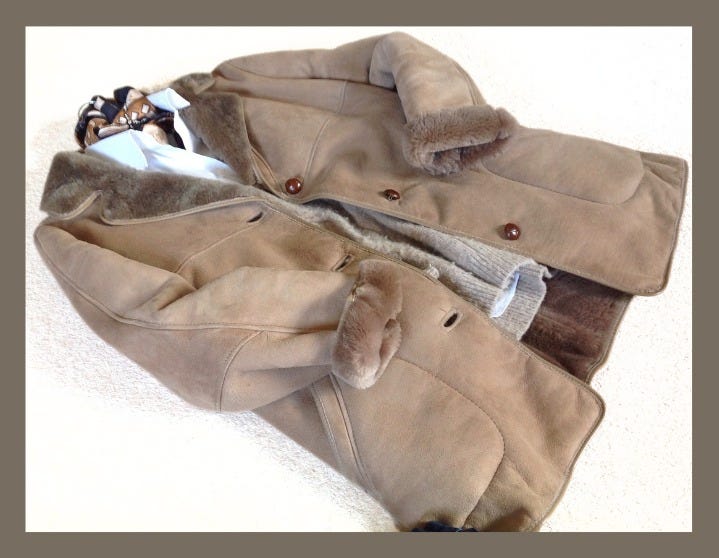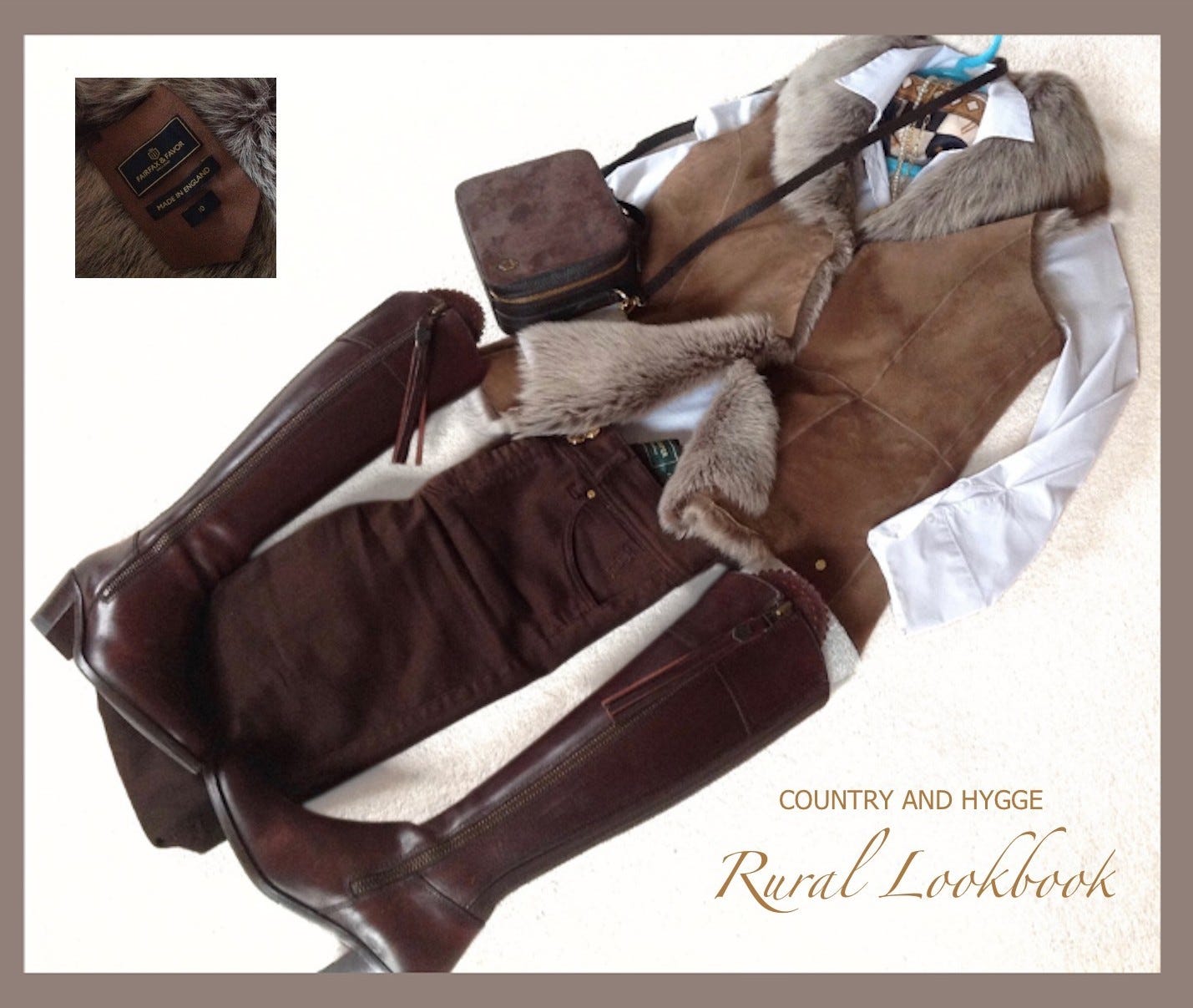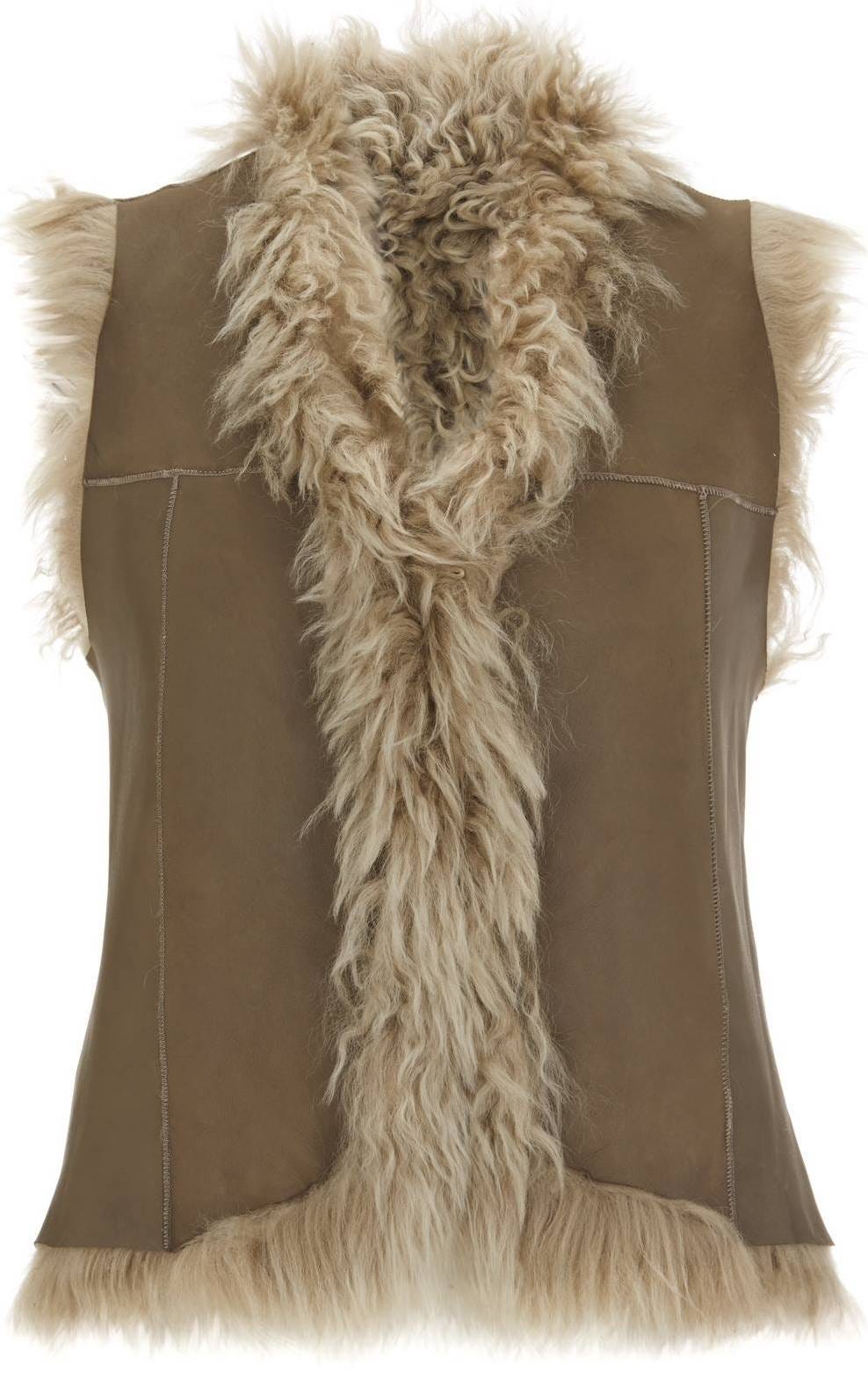Sustainable Materials - The Unique Qualities of Sheepskin
Ten Reasons to Love Sheepskin
Welcome to another blog! I thought I’d take some time to discuss natural materials and fabrics. Those that we consider to be sustainable, and are often utilised in country fashions. In this issue we’re making a start with sheepskin (and to a degree - wool).
Selective breeding for wool began around 6000 BC and the earliest woollen garments are dated to around 3000 BC…John Lewis-Stempel
Overview
Sheepskin is a meat by product, and a superb multi use and versatile material, which can be crafted into many products, from rugs to pram liners, shoes, slippers, bags, outerwear, etc. It’s basically tanned leather, with the fleece intact, and it offers up many qualities that make significant contributions to your wellbeing, health and comfort, some of which will leave you surprised. From babies, to the most style conscious of adults, the benefits are multiple. It’s definitely a consideration for your capsule wardrobe.
Sheepskin often has an air of being tough outdoors - in the countryside, or on the smallholding. These garments first gained popularity during WWII - the heavy weight aviator jackets keeping air crews warm. And while sheepskin can have us harking back to those visions of fighter pilots featured in old black and white cine films, it is also synonymous with iconic modern day style, fusing warmth, durability and function.
Due to it’s incredible resilience, outerwear crafted from sheepskin will often last near on a lifetime. Who can argue with that? You can bend it and manipulate it thousands of times and it will still retain its shape without damage. It’s also naturally fire retardant, due to it’s high water and nitrogen content, and would therefore require more oxygen to burn it.
10 Reasons to Love Sheepskin
Durability
First things first! Durability. In short – a sheepskin coat or gilet will last you decades, if not a lifetime.
Unrivalled Warmth
A good sheepskin coat is hard to beat on warmth factor. Absolutely always associated with elevated levels of cosiness, the crimp of the wool creates insulating air spaces allowing you to naturally retain your own body heat. It definitely qualifies as a winter and cold weather style staple.
Protects against UV Rays
With natural sun protection qualities, it will shelter you from harmful UV rays. A significant amount of UV radiation can be filtered out due to the dense structure of the wool. It provides a good barrier between your body and the heat, therefore preventing overheating and thus providing a cooling effect! Who knew?
Temperature Regulating Properties and Moisture Wicking
Made up of hollow fibres that allow for the circulation of air, sheepskin is a thermo regulator with amazing insulating properties that will keep you warm in colder temperatures, while allowing you to be cooled in warmer temperatures.
In the heat, it will wick away moisture and will allow the air to flow freely between the skin and the material, helping the body to cool down more efficiently and prevent excessive sweating. The core of the wool fibres can absorb 30% of its weight in moisture vapour without getting damp. Given it’s temperature regulating properties, it goes without saying that it’s going to be useful to you in varying climates, and therefore suitable for cross-seasonal use - think autumn through to spring.
Breathability
The big difference between synthetic materials and sheepskin is its breathability properties; yes, sheepskin allows your skin to breathe. The structure of the fibre’s that we’ve already alluded to, enable the absorption and release of moisture, reducing that discomfort that can be caused by sweating. Hot and humid, no problem!
Medical Benefits
Sheepskin is an electrical semiconductor, which in eliminating muscular tension and stimulating blood circulation, creates a calming effect. Not only are the medical benefits useful in babies pram liners, but also for those who find themselves bedridden, (or wheelchair bound) as sheepskin will cushion those key pressure points and therefore help to prevent sores.
Great for Babies and Infants
We touched on it in the last point. The use of sheepskin does indeed go beyond luxury:
Studies (the European Respiratory Society International Congress) conducted, found that babies who sleep on animal skins in their first three months are 70% less likely to develop asthma by age 10. These children also experienced less hay fever and wheezing. This is because the fur is loaded with beneficial microscopic organisms that help to bolster a baby’s immune system. With sheepskin, there’s also a developed resistance to bed bugs and mould growth.
Naturally Water Resistant
Sheepskin contains thick layers of wool – essentially water repellent fibres, so the exterior layer of the wool fibre will naturally repel water. Lightly shake outerwear after any exposure to rain or snow. When dry, smooth over with a specialist brush.
Timeless Style
As far as fashion and wearability goes, the sheepskin coat or gilet is a timeless piece, extremely versatile and so very often reimagined season after season, showcasing a wide variety of designs and silhouettes. But while it can be incredibly fashionable, you will also have that degree of functionality with your garment. The unique texture of the material can also help you to build contrast and juxtaposition into an outfit too.
Self-cleaning, Anti-irritant / Antibacterial Properties
Sheepskin contains lanolin, a kind of wax, which provides antibacterial self-cleaning properties. Also, given lanolin is often found in creams, it is soft and soothing for skin; it’s an excellent choice for people with sensitive or allergy prone skin who can take advantage of its hypoallergenic properties.
“The hair of the sheep is often an overlooked little miracle. Each fibre consists of a protective layer of overlapping cuticle cells that lie, like the slates on a roof, towards the tip.” The Sheep’s Tale, John Lewis-Stempel
The Dumfries House Declaration of the Campaign for Wool (Patron HRH The Prince of Wales) (Campaign for Wool) points out that:
Wool forms part of the natural carbon cycle; wool is a natural alternative to wasteful consumer practices; wool was made for recycling; wool is biodegradable; wool is naturally odour resistant; wool improves indoor air quality.
If you want to read more about this in-depth, then do have a read of The Sheep’s Tale, one of the excellent books written by John Lewis-Stempel, a ‘traditional’ style farmer who also happens to be one of the UK’s finest nature writers.







